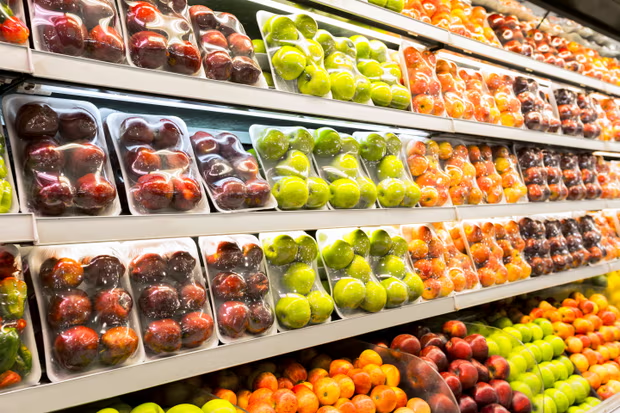A recent study has uncovered a significant health concern, revealing that over 3,600 chemicals approved for use in food packaging, kitchenware, or food processing equipment have accumulated in human bodies.
These chemicals were detected in blood, hair, and breast milk, bringing to light a less regulated exposure risk to harmful substances.

The research, published in a peer-reviewed journal, identified chemicals such as PFAS, bisphenol, metals, phthalates, and volatile organic compounds (VOCs).
Many of these are associated with severe health issues, including cancer and hormone disruption.
However, the study also uncovered numerous substances with limited toxicological profiles, including synthetic antioxidants used as preservatives and oligomers used in ink stabilization on packaging.
This indicates a critical need for more stringent scrutiny of food contact chemicals, according to the study’s authors.
Birgit Geueke, a co-author from the Food Packaging Forum, highlighted the concern about hazardous chemicals migrating from packaging into food, contributing to human exposure.
The investigation identified approximately 14,000 chemicals approved for food contact, conducting a thorough check through databases and scientific literature for evidence of their accumulation in humans.
The study emphasized that human exposure occurs through multiple scenarios, so the findings do not solely implicate food packaging.
Materials like plastic, which is largely unregulated, emerged as significant culprits.
Geueke noted that plastic can contain thousands of chemicals, while silicone and metal can coatings also include toxic or understudied compounds.
Moreover, paper and cardboard products were often treated with PFAS and could contain layers of plastic.
Certain conditions can increase the rate at which these chemicals leach into food.
Higher temperatures, specific fat content, acidity, and packaging-to-product ratio can all contribute to greater contamination levels.
In the United States, many chemicals receive approval with minimal scrutiny under the FDA’s “generally regarded as safe” (GRAS) rule, which permits chemicals for food contact with limited oversight.
Furthermore, current U.S. regulations do not mandate the FDA to revisit the safety of these chemicals based on new scientific findings after their initial approval.
Chemical substances like PFAS and titanium dioxide remained on the market for decades before being removed or reassessed.
Even in the European Union, known for its stricter regulations, there is room for improvement.
Although there are tighter controls for certain substances like PFAS, more rigorous regulations are still necessary.
Experts suggest that consumers can reduce exposure by opting for food stored in glass jars, which typically have fewer chemicals.
Some researchers even bring their own glass containers to restaurants for packing leftovers.
Additionally, transferring food from plastic containers to glass jars at home can minimize chemical transfer time.
However, Geueke warned that it is impossible to entirely avoid these chemicals without stronger regulations.
Ultimately, the research underscores the essential need for more stringent regulations to safeguard public health from the invisible yet pervasive risk posed by almost unregulated chemicals in food packaging.
